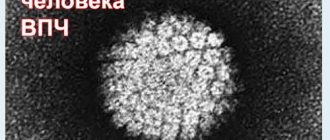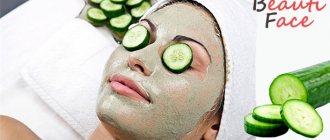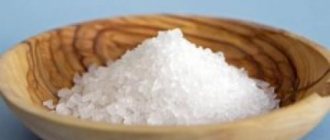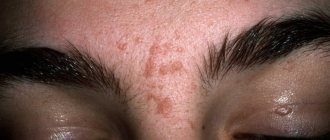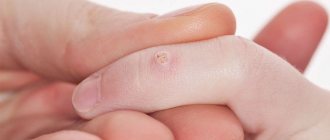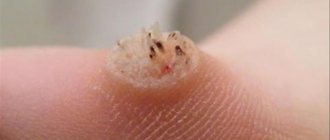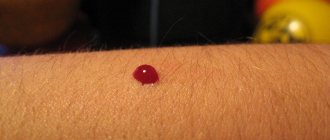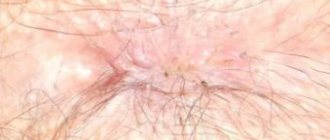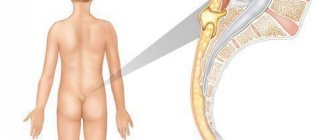A wart is a benign formation that appears on the skin or internal organs in the form of a convex skin growth of a round shape.
The direct cause of warts is the human papillomavirus.
Transmission routes:
- common items;
- sexual intercourse with an infected person;
- open wounds with bleeding;
- generic activity.
Those at risk are those who have:
- promiscuity;
- decreased immunoprotective function of the body;
- violations of personal hygiene rules.
Among the factors that provoke the appearance of papillomas:
- infections and inflammations;
- hormonal imbalances;
- psycho-emotional overload, stress;
- overwork;
- vitamin deficiencies;
- unfavorable environmental background;
- poor working conditions.
A wart is not dangerous to the life and health of the patient, but is an unpleasant cosmetic defect. It may disappear on its own over time, which is typical for childhood. If this does not happen, then the treatment will be lengthy and will require the use of special medications. Traditional medicine methods also cope well with the disease.
Types of warts
Neoplasms are classified depending on the type of virus that caused their appearance.
Common warts
Formed on the palms, fingers, knees (in children). They look like dense, hard round bubbles.
Plantar
Another name is spines. They are located on the back of the foot - the sole. In appearance they look like rounded growths, in the middle of which there are small protrusions-papillae. Compression of nerves by keratinized skin leads to pain during movement.
Condylomas acuminata
They look like elastic formations, similar in shape to cauliflower. They are located on the mucous membranes and affect the nasopharynx, genitals, anus, bladder, and vocal cords.
Senile warts
Associated with age-related changes. Caused by cell aging, heredity, and exposure to ultraviolet radiation.
Mechanism of appearance on hands
Papillomavirus is contracted through unprotected sexual contact, in baths, swimming pools, and saunas.
An ill mother can pass the infection on to her baby during childbirth.
The danger of the virus is that it does not cause symptoms for a long time.
The appearance of warts proves the presence of HPV in the body. There are about 170 species of them. Among them there are high and low oncogenic risk. The most dangerous are papillomavirus types 16 and 18.
To get inside the body, the virus only needs to penetrate damaged skin or mucous membranes. Then the active life of HPV begins in favorable conditions.
The pathogen colonizes epithelial cells, where it grows and multiplies. The virus does not manifest itself clinically for a long time. The body's immune system can cope with foreign microorganisms for a long time. Under the influence of unfavorable factors (hormonal disorders, stressful situations, weakened immunity), the disease manifests itself as warts.
Locations
The growth can occur on any part of the body. The places where papillomas most often appear are:
- face;
- hands;
- breasts (mammary glands in women);
- shoulders;
- knees.
The rash also affects the mucous membranes of internal organs.
On the fingers
Frequent manifestations in this area are vulgar and flat warts.
On hands
Palms, elbow joints, and nails are the favorite location for flat and vulgar papillomas. Senile warts are also localized here.
On foot
Plantar lesions often occur in this area, affecting the fingers and feet. In children, knees are susceptible to pathology: flat warts appear here.
Symptoms
Warts on the stalk are often injured, so it is recommended to remove them
A wart on a thin stalk in most cases has only visual symptoms. Itching, burning and other discomfort are rarely present in areas where the skin is affected.
The neoplasm is a thick and rough growth that is attached to the surface of the skin with a thin stalk. The neoplasm is rough to the touch. It is localized in any part of the body, but mainly in the armpits. Such warts are prone to injury, so it is recommended to remove them in a timely manner.
General treatment recommendations
Removing warts is a long and complex process. A variety of methods are used to combat the papilloma virus:
- traditional drug therapy;
- removing warts at home using unconventional means;
- surgical removal.
When choosing what you can use to remove warts on your hands, you should remember that:
- None of the methods can completely remove the wart; there is always a risk of relapse;
- as a result of the treatment, scars may remain on the body;
- the duration of the treatment period, as well as the result that the therapy will lead to, cannot be predicted;
- Given the fact that warts can spontaneously disappear after a certain time, it is advisable to simply observe their behavior over a certain period;
- Treatment of pathology begins using simple and inexpensive means first. Then, if no positive dynamics are observed, they move on to taking more radical measures.
Immunotherapy
Since the development of the disease occurs against the background of decreased immunity, restoration of the immune system is necessary. Immunomodulatory drugs are prescribed if other methods of treating the pathology have been unsuccessful.
Among the medications that activate the protective function, the following are prescribed:
- "Groprinosin": deeply affects the immune system. For treatment to be effective, a long course of therapy is required.
- Interferon-based medications suppress the ability of the virus to reproduce.
Removing warts with medication
Destroying acids such as salicylic acid, trichloroacetic acid, urea and other special medicines are also wart removers. Any pharmacy offers a fairly wide selection of such drugs.
Salicylic acid, urea softens the top layer of the wart, in addition, stimulates the local immune response, and hence the disappearance of the wart. But when choosing to treat warts with medications, you need to be patient, because even if you use the product in strict accordance with the instructions, the effect becomes noticeable only after a few months.
Removing warts with medication
In addition, constant use of the drug is required according to a special scheme in compliance with certain skin care rules. Sometimes it causes discomfort to the patient and also the medicine has side effects such as skin irritation, redness, etc.
Therefore, many patients make a better decision - see a dermatologist and remove warts in faster and safer ways.
Pharmacy products
There are quite a lot of medications that help remove warts. They are presented in the form of ointments and aerosols for external use, medications intended for internal use, aimed at combating the papilloma virus.
Among them:
- cryopreparations;
- medicines based on herbal ingredients;
- products made using chemicals.
Pharmacy ointments
To remove warts, “Zinc ointment” is widely used: it protects the skin from pathogenic effects. Warts are smeared up to six times a day.
Antiviral
In the fight against the cause that led to the development of the disease, it is recommended to use:
- “Oxolinic ointment”: kills viruses, prevents them from entering cells. Safe during pregnancy, contraindications include individual intolerance to oxolin.
- “Viferon”: stops the inflammatory process, has a beneficial effect on the skin, applied three to four times a day. Does not have a negative effect on the fetus during its intrauterine development. It should not be prescribed to infants, or if there are individual contraindications.
- "Panavir". Available in gel form. Strengthens the immune system, has the property of dissolving scars. Used twice a day, not prescribed to children and adolescents under 18 years of age, safe while pregnant.
- “Interferon ointment”: has an antiviral effect, fights pathogenic microbes, strengthens the immune system. Does not harm the normal development of the embryo. Apply once to twice a day.
- "Acyclovir": has a detrimental effect on the source of the disease. Not suitable for use by pregnant women, breastfeeding, or children under two years of age. The product is applied to the wart every four hours, the duration of the course is no more than 10 days.
- “Vishnevsky Ointment”: heals, disinfects, has an anti-inflammatory effect. Apply up to three times a day under a bandage. Not recommended during pregnancy and lactation.
- “Ichthyol ointment”: eliminates pain, inflammation, promotes cell regeneration.
Acids and alkalis
To get rid of warts, they practice the use of ointments containing acids and alkalis. The most popular products that can be purchased at every pharmacy:
- "Salicylic": developed on the basis of salicylic acid. Apply once every 2-3 days. Not prescribed for kidney pathology.
- “Super celandine”: disinfects the skin surface, heals wounds, accelerates cell regeneration, and effectively fights inflammation. Used once every few days. The drug is not intended for pregnant and breastfeeding women.
Traditional methods
Recipes of alternative medicine help to effectively and quickly remove warts at home. They are based on the action of natural ingredients. In order for the treatment to be safe and bring only benefit and relief to the patient, before you begin to remove a wart with folk remedies, you should definitely consult a specialist.
Celandine
Celandine juice can be added to ointments, decoctions, and healing infusions. They lubricate the growths daily until they disappear completely.
When using, it is important to strictly follow the medication dosage schedule: an overdose can lead to undesirable consequences and cause skin burns.
The tincture is prepared following the following procedure: the leaves of the plant are mixed with string and chaga (the components are taken in equal proportions), brewed with boiling water, and infused. After cooling, the liquid is frozen. Rub the resulting ice cubes over the affected areas.
You can treat the disease with a tincture made from plant materials. To do this, the juice is mixed with vodka in a 2:1 ratio and stored in a cold place. The medicine is indicated for external use.
Vinegar
Has disinfecting properties. There are several options for using acid to remove warts on your hands at home:
- One drop of liquid is applied to the sore once a day. To avoid contact with healthy skin, it is recommended to lubricate the sores with a cotton pad.
- Clean the affected area with antibacterial soap, after steaming the wart. Then they cover the area around with a bactericidal adhesive plaster (you can lubricate the area with Vaseline or greasy cream), moisten a cotton pad with vinegar, apply it to the sore spot and wrap it with a bandage on top.
When carrying out such procedures, the following rules must be observed:
- refuse further manipulation if there is a feeling of severe burning or pain;
- stop treatment immediately if blackening of the pathological growth is observed;
- It is better to carry out the procedure in the evening.
If you are treated daily with a bite, the warts disappear quickly: within a few days not a trace of them will remain.
How to withdraw
In most cases, aggressive chemical substances are used, for example, necrotizing and freezing ointments. In order to prevent the source of infection from multiplying and increasing in size, timely intervention and innovative means will help. They will improve your health and restore the aesthetic beauty of your body. Let's consider several options that can help remove the tumor quickly at home.
Pharmacy ointments
It is worth choosing wisely an ointment for removing warts. Ointments against papillomas come in different bases. Depending on which drug you are not allergic to, you can find ones that combine several beneficial properties. Oxolinic ointment has an antiviral effect and will help stop the spread of the virus. However, treatment of warts with its help can last from 3 to 7 months. Mozolin will cope with calluses and growths on the feet.
Antiviral
In addition to local medicinal ointments, it is worth paying attention to antiviral drugs. From our school desks we remember that viruses are not bacteria, and you can’t just remove them. If antiviral medications are added in combination with immunomodulators (Veruxin), the likelihood of relapse can be reduced by 80%. Isoprinosine and its analog Groprinosin are good representatives of antiviral agents.
Salicylic acid
Salicylic acid removal is also an acceptable type of exposure. The duration of applying acid to the problem area can be up to a couple of weeks. The success of this treatment method will depend on accompanying factors: before starting to apply the drug, it is worth steaming the wart a little. Every day you need to carefully get rid of the keratinized, dead skin around the inflamed source of infection, lubricating it with tea tree oil. But salicylic acid has serious drawbacks - the result is noticeable only after several weeks of daily use. In addition, it can cause damage to the skin, and as a result of such treatment, ulcers and subsequently scars may form.
Removal by conspiracies
Some people believe that suddenly appearing growths are the result of damage, and in order to remove it, you need to read the spell. For example, for one of the spells, you will need a long thread on which you should make 13 knots, which will be tied exactly at the location of the wart. Each knot must be cut off from a common thread and tied to the legs of thirteen frogs.
When releasing them in the forest, say the words: “13 brothers of devils, harness 13 swamp toads, and each one go along his own path. Remove warts from the servant of God (your name). Just as these 13 toads will not converge in one place, so the warts will never return to me. Key, lock, tongue. Let it be so.".
However, there is no need to place serious hopes on various conspiracies and prayers to remove warts. It is important to understand that they will not bring results, and you will simply waste time that you could spend on real treatment.
- Ear hurts - what to do, first aid
- Laryngotracheitis in children - symptoms. Treatment of acute and stenosing laryngotracheitis at home
- Treatment of stomatitis in adults at home: remedies for the disease
Removal methods in the clinic
To determine the most optimal way to remove warts, it is necessary to conduct a diagnostic examination of the tumors. It consists in:
- visual inspection of growths;
- carrying out histological analysis, which helps to identify the malignancy of existing papillomas.
After diagnosis, the possibility and necessity of whether it is necessary to remove warts on certain parts of the body is determined.
Electrocoagulation
It is the cauterization of pathological neoplasms by exposing them to an electric current passed through a special device - a coagulator. During the procedure, tissues are heated, as a result of which they die. The method allows you to remove pathology within three minutes; on the foot, removing sores will take about 10 minutes. Immediately after the session, swelling and inflammation may be observed at the site of manipulation. These symptoms disappear after a few hours.
Available contraindications:
- malignant tumors;
- acute stage of herpes;
- diseases of the circulatory system;
- skin inflammation;
- pregnancy and breastfeeding;
- heart pathologies;
- presence of pacemakers;
- intolerance to anesthesia;
- increased sensitivity to electrical procedures;
- exacerbation of chronic diseases.
Cryodestruction
A method of treating warts with low temperature (liquid nitrogen). Cold stops vital processes and provokes necrosis of cellular structures.
Laser method
The procedure is carried out by exposing the wart to laser beams. This leads to the rapid evaporation of growths from the skin surface; after the session, no scars or scars remain on the epidermis. A method is prescribed for the treatment of papillomas, moles and warts in all categories of patients, including children and pregnant women.
Surgical method
When there are growths of a hard, dense structure, as well as when the formations are large (more than one centimeter in diameter), alternative methods are ineffective. In this case, it becomes necessary to cut out the wart with surgical instruments under local anesthesia. After the operation, the wound is sutured. The sutures are removed after complete healing.
There is a risk of infection spreading through the bloodstream throughout the body.
Is it possible to cut it?
Almost every person who has papillomas on the body (especially in prominent places) has thought about this issue at least once.
Why wait weeks or even months trying to cure papillomavirus with medication when you can simply cut off the affected area of skin? However, not all so simple.
It is impossible to say with absolute certainty whether this method of getting rid of unwanted skin growths is effective or ineffective.
There have been cases when surgical removal of a tumor at home was quite successful. But most often, cutting off a wart on your own does not bring significant results .
IMPORTANT : In rare cases, self-removal of a wart with a knife, thread or other sharp object can provoke the appearance of a cancerous tumor in the body.
As noted earlier, a wart is a skin growth. It is part of the skin, and its roots can penetrate into its deeper layers.
Accordingly, such a skin growth is penetrated by the smallest blood vessels, capillaries, so when the infected area is damaged, bleeding begins. So, if you cut out a skin lesion on your own, there is a risk of getting an infection in the blood.
What happens if you rip off or cut off a wart?:
- legs;
- language;
- scalp;
- pubis in women and men;
- other different parts of the body?
As statistics show, cutting or tearing off the horny outgrowth on your own leads to initial suppuration of the resulting wound.
If you still manage to get rid of the pus, a new one, much larger in size, forms in place of the previous wart. It often happens that in place of one, a whole cluster appears (5-10 pieces in one place).
Therefore, to the question: is it possible to tear off warts , we will answer this way - it is better to go to a doctor who treats skin diseases.
Possible complications
The negative consequences of getting rid of warts are:
- pain;
- itching;
- burning;
- change in skin tone;
- scars and spots (observed after surgery).
You can minimize complications that arise during wart removal if you follow the following recommendations:
- Apply topical preparations to the areas where warts were previously located.
- Do not cover the wound with a bandage.
- Do not pick off the scabs covering the wound. If necessary, they should be softened with furatsilin, then carefully cut off the exfoliated areas.
- Protect the wound from direct sunlight.
- Do not use decorative cosmetics until the wound has completely healed, or use alcohol-containing solutions.
- Take vitamins and fortified complexes to restore normal skin structure.
Prevention of warts
In order to prevent the occurrence of papillomas and warts, the following precautions must be observed:
- wash your hands regularly after each visit to the street, public places, or trips on public transport;
- while in saunas and swimming pools, wear rubber slippers and use personal hygiene products;
- if the skin is injured, all wounds and scratches should be treated with an antiseptic;
- support immunity through hardening, taking vitamins;
- prevent vitamin deficiencies, eat enough fresh vegetables and fruits;
- lead a healthy lifestyle: give up bad habits, exercise, walk in the fresh air, monitor your diet, follow a sleep and rest schedule;
- promptly treat infectious diseases.
The appearance of warts does not pose a threat to life and health, but it signals that there is an infection in the body, accompanied by a disruption in the normal functioning of the immune system.
Causes
Warts of any type are caused by infection with the human papillomavirus (HPV). This virus is transmitted from person to person through personal contact, sexual contact, and also through household items.
Since the virus may not show its presence for a long time, a person may not suspect that he is its carrier. The incubation period can range from several months to several years. Pedicled warts appear only when the virus is activated.
The following reasons may lead to this:
- Weakening of the immune system due to bad habits and unbalanced nutrition.
- Recent infectious diseases.
- Pathological conditions of the endocrine system.
- Lack of vitamins and minerals that lasts for a long time.
- Hormonal imbalances.
- Hypothermia of the body.
- Change of climatic conditions.
In most cases, warts form when several causes are combined. One of the above items rarely leads to the formation of growths on the skin.
